SPOOKYJUMP: The Best Games To Play This Halloween
Play these games if you dare...
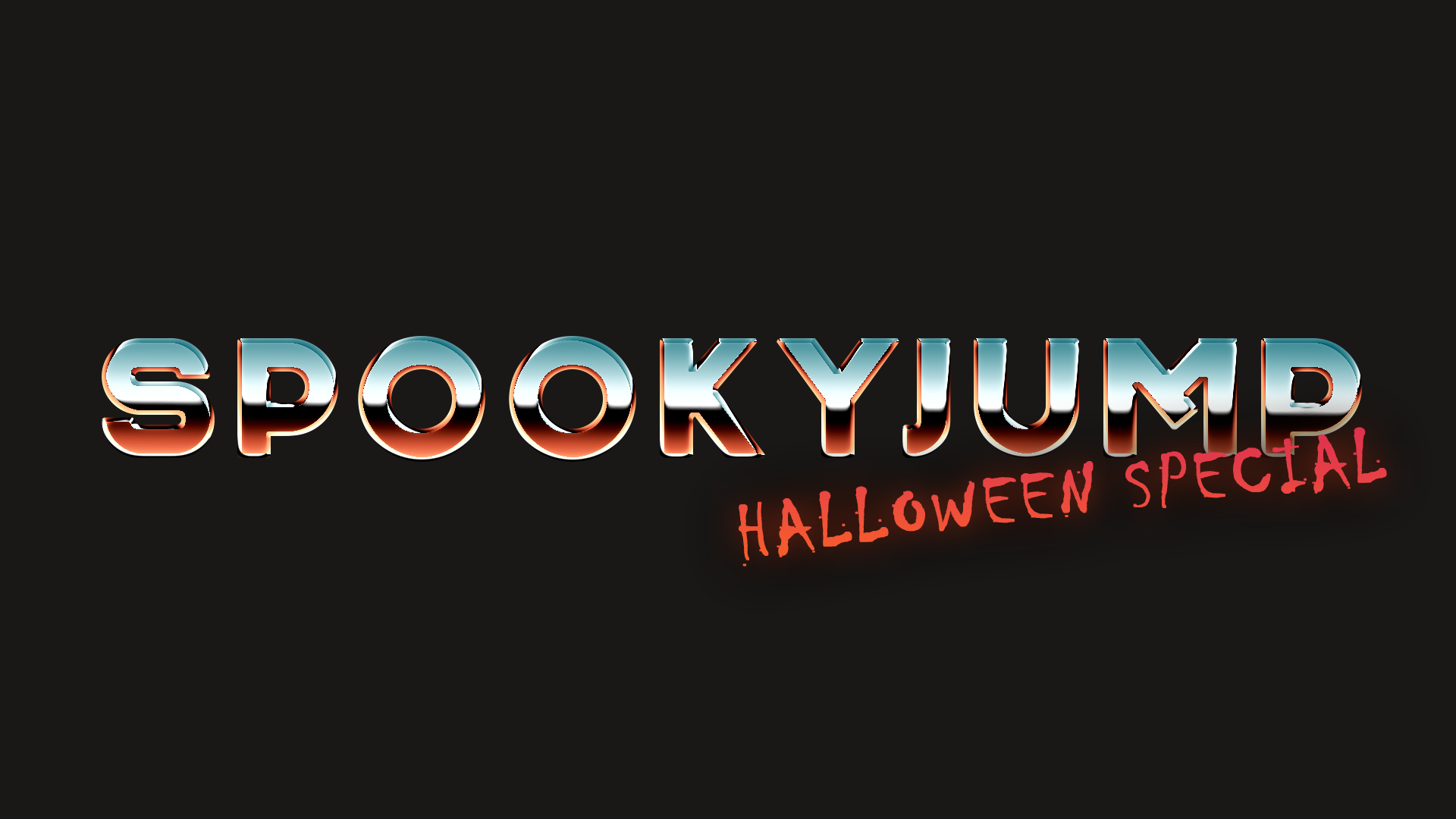
It’s the spooky season once again, the time when the video game industry has no shortage of experiences that will make you wish you made other choices like to have left the light on, to have brought an extra pair of bottoms, or to have chosen a different game altogether.

This Halloween, the writers of SUPERJUMP have put together a piece celebrating spookiness, whether that be the full-blown horror experiences of Resident Evil or the subtle uneasiness of seemingly innocuous and relaxing indies like Strange Horticulture. If you enjoy the thrill of an unsettling atmosphere or spooks to stop you from sleeping with the lights out, read on (if you dare) to find the best spooky games this Halloween season in the official SPOOKYJUMP Halloween Special…
- Rory
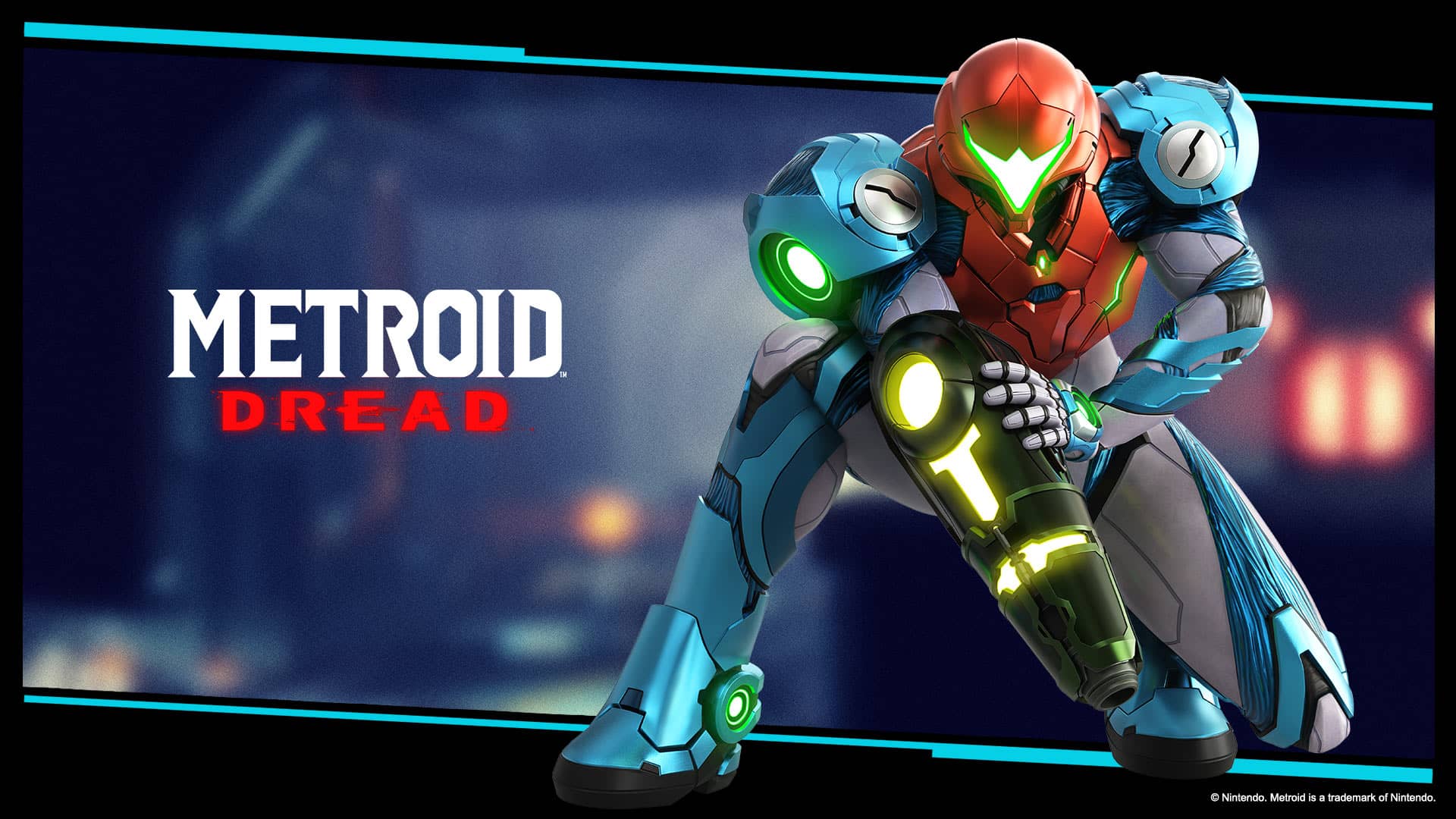
Metroid Fusion/Dread (2002/2021)
Brandon R. Chinn
Samus Aran has long reached the limit of human experience.
While exploring the surface of planet SR388, Samus becomes infected. Different from any foe previously encountered, the X parasite buries itself deep within Samus’ body, adhering to her musculature. Emergency surgery is performed, and Samus’ infected suit is removed piece by piece, her familiar warrior weaponry disembodied. The X parasite has done more than infect her suit—it has infected Samus’ central nervous system, mutilating her body. While she is presented with a curative vaccine made from the infant Metroid that once saved her, Samus continues her transformation into something beyond humanity. Part human, part Chozo, part X parasite; the bounty hunter continues to mutate as she seeks a peaceful galaxy.
Metroid Fusion, on its surface, may not be categorised as a horror video game. Metroid Fusion and Metroid Dread contain all the pieces of horror, and like the X parasite that infects her suit and becomes a variable threat, horror cannot always be easily identified. While the journey across Metroid titles is not often a personal one, Samus Aran is its core. Again and again, she fights as a “bounty hunter” for the Galaxy Federation, inflicted a thousand times over by physical injuries and mental terrors. What Metroid Fusion establishes is a Samus that is literally haunted by her pest self, a homunculus of eerie perseverance.
The Metroid series is replete with aspects of horror. Metroid Prime oozes with a sense of dread and locked behind Samus’ stuffy helmet the world is often claustrophobic and sterile. Enemy encounters occur in a world of biomes so completely overgrown as to give nature its own sense of true terror, that of the planet fully plunged into a lost paradise that cannot be controlled by civility. Aboard the BSL space station in Fusion, Samus is hunted by a living replication of her own Power Suit, the SA-X. Completely weakened by the X parasite and without a meaningful way to fight back, the once-powerful bounty hunter must slink through the shadows and dodge the SA-X as it hunts her down. Evocative of the Predator killing completely unmatched military men or a xenomorph stalking Ripley in Alien, Samus is finally put up against a match that she cannot hope to win—the emulated version of her dark self.
Metroid Fusion flavours the Metroid formula with aspects of survival horror, again recreated in Metroid Zero Mission. Upon losing her Power Suit yet again, Samus must retreat from Space Pirates armed with only a stun gun. Without her suit, Samus is only a person, and like so many flavourful survival horror games she must contend with unmatched foes using only her wits and her stealth. While Metroid Dread does not inflict the player with this sense of weakness, we are shown even more terrifying monsters in the EMMI—a near-invincible clutch of reprogrammed robots determined to extract the Metroid DNA that races through her body. Samus herself becomes one of the hunted, a bounty hunter whose existence is marked by the wealth of her mutations.
The events of Dread escalate the horror ripping through Samus’ body by again mutilating her in a nascent way. Samus—infused with Chozo DNA, infected by the X, and blessed with Metroid abilities—ascends to a new monstrosity. As the X parasite and Metroid DNA fight for supremacy within the boundary of her body, the future of Samus Aran is unclear. She has sustained untold mutilations on behalf of an uncaring Galactic Federation, her physical self pushed past the limits of consciousness.
The Metroid series is a tale of endless body horror, a test case of how much a single woman can sustain. It’s unclear how Samus will continue to evolve, or how these living terrors will affect her in the times to come. Samus has faced living nightmares, and invincible monstrosities, facing down the living embodiment of her darkest self. Eventually, she will slip beyond the event horizon, and no one will be safe.
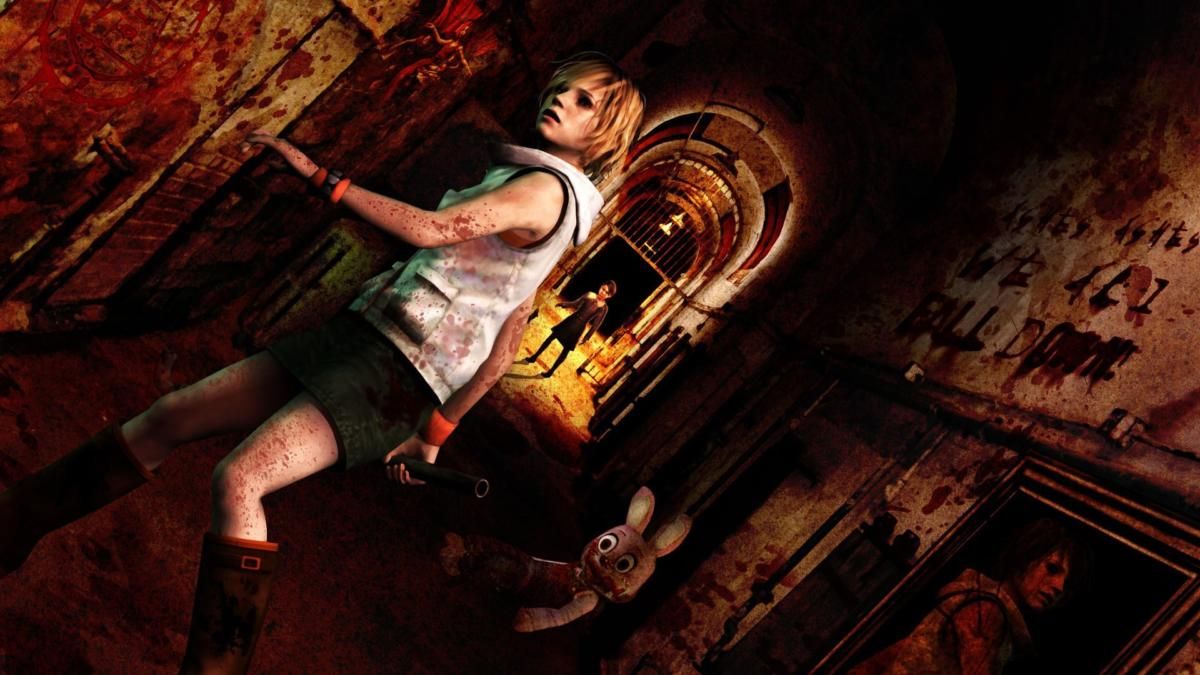
Silent Hill 3 (2003)
Geena Hardy
There’s a lot about playing video games that are exercises in living with fear and voluntary isolation. As an interactive medium, I think video games work best when they’re collaborative, when there’s companionable energy to play off. So, you can imagine the conundrum I experienced when the games I appreciated in my teendom hinged on isolation, fear, and moral quandaries. These were games my siblings weren’t interested in.
Silent Hill 3 was my intro to the Silent Hill franchise. It’s the bar I used to judge all others in the franchise. Magazine ads—particularly the one of Heather slumped over in a wheelchair with meme-ish writing complemented by micro-screenshots–were morbidly enticing. It was the first horror game I wanted to play when I was staunchly anti-Horror.
TechTV’s X-Play was the first time I saw the game in action. The Morgan Webb-helmed review of the game impressed upon me a story I waited almost a decade to experience personally.
Silent Hill 3 doesn’t promote itself as the authentic narrative of a teenage girl’s so-called life, yet Heather remains one of the most genuinely human characters in a video game. And Heather’s humanity, in a hyper-masculine period of gaming that treated women and vulnerability like a disease, was something constantly highlighted in retrospectives for the game in 2013, celebrating its 10th anniversary.
Concept artist Shingo Yuri stressed the importance of Heather as a vulnerable teenager, one with all the flaws expected of a Silent Hill protagonist. The usual faults and short temper of Heather’s particular age colour how she reacts to the Otherworld, and the adults who stalk her—from Detective Douglas to Claudia Wolf.
Within the increasingly hostile world Heather finds herself trapped in, Vincent feels closest to the ‘monsters’ that groan and slough through the mall and abandoned apartments, snapping at Heather’s heels and shoving her into corners. His presence is cloying and mocking. Nothing about him is genuine, comparatively making Douglas and Claudia’s agenda-driven interactions with Heather the most honest dynamics she develops in-game.

Endearing me to Heather is her off-screen relationship with her father, Harry Mason, the protagonist of the original Silent Hill. Harry’s role as her only parent and protector unfolds through Heather’s narrative in memories. Heather has lived a life of isolation, shielded from her past lives. She goes out into the world with a knife for protection and doesn’t trust people in a way that only a particular trauma inspires.
You could view Harry as overbearing or overprotective, but the narrative would justify the isolation of the Masons with the murderous actions of the cult. And while Heather doesn’t have particular qualms with the way she’s lived her life, you truly get the sense that she’s lost not only her father when Harry is murdered but a friend as well.
I won’t get into the weeds, but my mother lives in a state of constant mistrust of people and her environment. To a certain degree, I similarly could not trust people—even when I wanted to—and my mother’s overprotectiveness made keeping friends hard. I couldn’t go anywhere for long stretches without my mother conjuring worse-case scenarios. She thought the worst of everyone.
And as that behaviour chafed in adulthood, she finally confessed the why. Someone tried to hurt her. When replaying Silent Hill 3, it was hard not to project. Heather, travelling in empty places alone, reflected to me how I could never feel safe anywhere without a companion.
Similar to myself, Heather lives with a kind of inherited PTSD - from her father and who she used to be. Everything and everyone becomes a potential threat. Heather’s confrontations with the blunt-faced monsters with no hands, bloated walking corpses bleeding like infected wounds, are how social anxiety twists things after harm is done. Monsters who drag Heather into the shadows and into the Otherworld, twisting valves that shift the worlds, feel a lot like the shapes you’re always warned to look out for on your own.
Silent Hill 3 is one of the few horror narratives that isn’t concerned with spectacle or twists. The grossness of the world reflects the external forces trying to harm Heather rather than reflecting Heather herself. The death of Harry isn’t a plot twist like the death of Nicole Brennan in Dead Space. That loss is very much a part of how Heather communicates with the twisting world around her. It’s her driver, and in the end, how she protects her bodily autonomy from Claudia and frees herself from that shadow of paranoia that has haunted her family since her inception.
The world doesn’t become safer for Heather, but she may make something new in her freedom from the cult. And I think that’s why, of all the Silent Hill games, I consider Silent Hill 3 the strongest entry in Konami's beloved frsnchise.
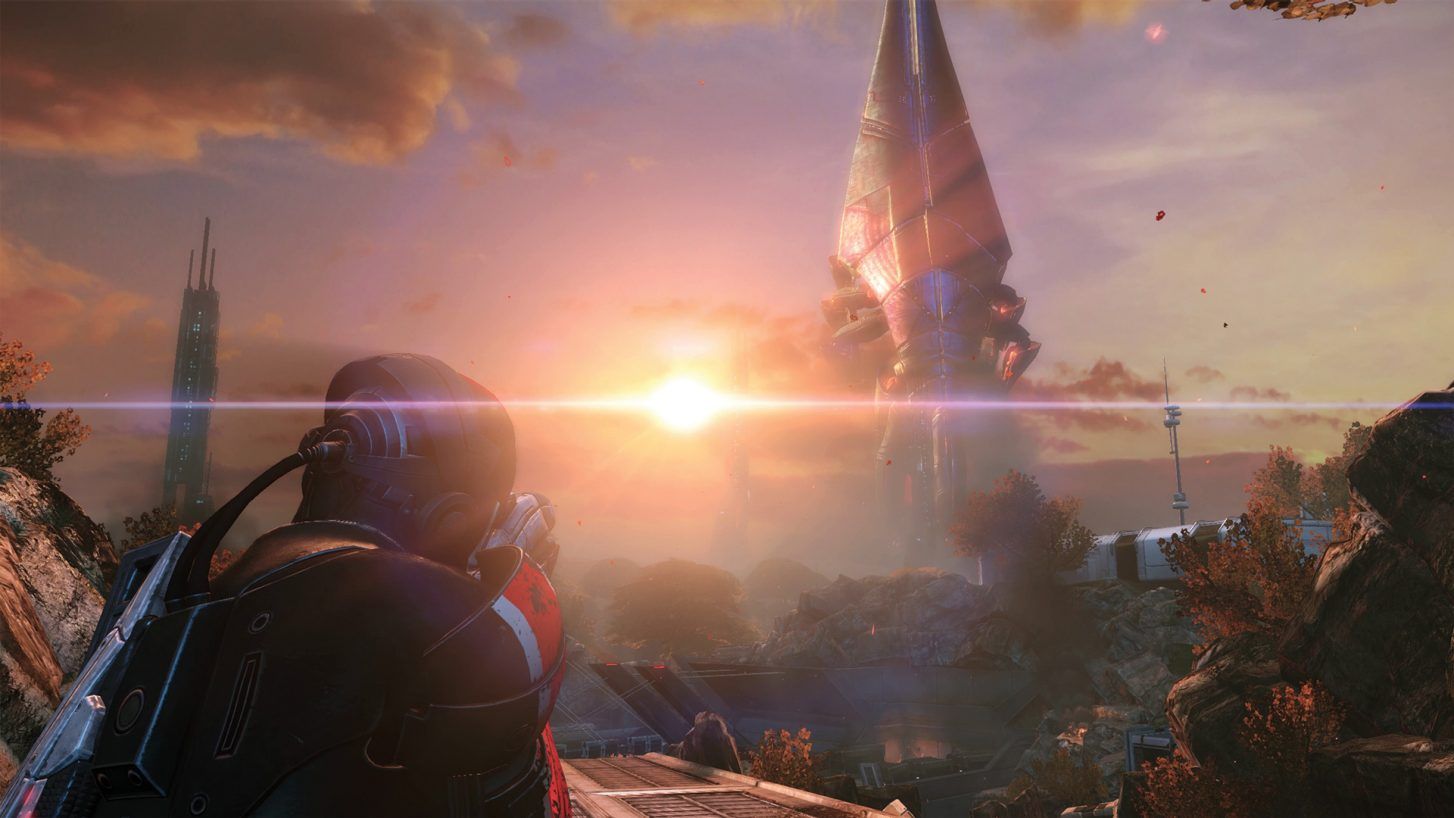
Mass Effect Series (2007 onwards)
Jared McCarty
Mega comets, rogue asteroids, solar flares, biting cold, massive mysterious black holes, absolute silence, and the infinite ever-expanding unknown. Space. It's so vast we quite literally can't comprehend it. We aren't entirely sure what happens if you fall into a black hole, with our best approximation being that it would "spaghettify" you, compressing you vertically while stretching you horizontally. If our sun decides to have a particularly strong lunch, a massive solar flare could engulf the world and completely knock out our ability to use the internet and our electronics. All of this is without even considering the idea of extra-terrestrial life, existing somewhere out there in the cold cosmos. Space is… scary.
This concept has been explored throughout the entertainment medium for decades. Movies like Alien do an excellent job of portraying the quiet terror of the great expanse. Video games like Prey show what happens when humans ignorantly tamper with dangerous entities, and the pitfalls of hubris. In my opinion, however, one of the best titles to bring the bone-chilling fear of space into your living room is the Mass Effect series.
There are a few aspects of Mass Effect that are overlooked in their horror. There's the Lovecraftian-inspired Thorian - an ancient sentient plant that uses its spores to control the minds of its hosts to protect and tend to the Thorian. There are the Rachni - vicious insect-like creatures that threatened Alliance space during the Rachni Wars. While definitely disturbing, neither of those is that frightening.
In a world of Dead Spaces and System Shocks, how can Mass Effect scare me? The series where you can punch reporters and romance a woman in a purple hazmat suit with backward knees? The series with body pillows of the ‘sexy’ blue alien releasing unironically? That's easy - the Reapers are goddamn terrifying.

For anyone who doesn't know (spoilers), the Reapers are a collective of ancient hyper-intelligent beings who harvest the galaxy's sentient life to forward the Reaper’s collective hive-mind intelligence. The Reapers have existed for at least one billion years, floating in the empty starless space between galaxies. They created the mass relay network - mass transit devices scattered across the Milky Way galaxy that allow for rapid interstellar travel. The mass relays, along with the Citadel, serve as a trap of sorts; when used, they alert the Reapers of a civilization's ability for space travel, thus showing that they're advanced enough for consumption.
Once alerted, they start exploring the systems to find those deemed suitable to consume. They do this by deploying Husks - horrifying cybernetic zombies created from the victims the Reapers found unworthy for consumption. To achieve this, they take their victims and impale them on large spiked apparatus, known colloquially as "dragon's teeth." These dragon's teeth slowly convert the body's skin and organs into cybernetic material, including the addition of an electrical charge. These Husks come in all sorts of fun shapes and flavours - human Husks resemble grey and blue zombies, with wiring leading from their eyes, a blue hue surrounding their chests. Hulking abominations known as Brutes are the lovechild of Reaper-corrupted Krogans and Turians. Most horrifying of all is the Banshees, terrifying monstrosities derived from the otherwise beautiful Asari race. Their terrifying screams and grotesque protruding bellies are truly the stuff of nightmares, and still freak me out to this day.
What do the Reapers do to those who they deem worthy of assimilation? Why, they stick them inside fleshy, Matrix-style single-person pods, where nanites slowly dissolve victims alive into a synthetic paste. From there, the paste will be used to help with the construction of a newborn Reaper, while their minds will be used to help further the collective consciousness of the Reapers as a whole. During their invasion of Earth, it's estimated that the Reapers were harvesting as many as 1.86 million humans every single day.
If that's not bad enough, the Reapers have a slave race genetically engineered from their previous cycle of victims known as the Collectors. These chitinous horrors mindlessly do the bidding of the Reapers and can collect hosts as efficiently as the Husks can.
Their efficiency is what cements the Reapers as truly one of the scariest antagonists in video game history. They do not care about any species they've decided are inferior - which just so happens to be all of them. They're calm, collected, organised, practised killers, who get smarter with every victim. If you ever see a space squid barrelling toward the planet, say your goodbyes. The Reapers are here, and they're going to destroy everything.
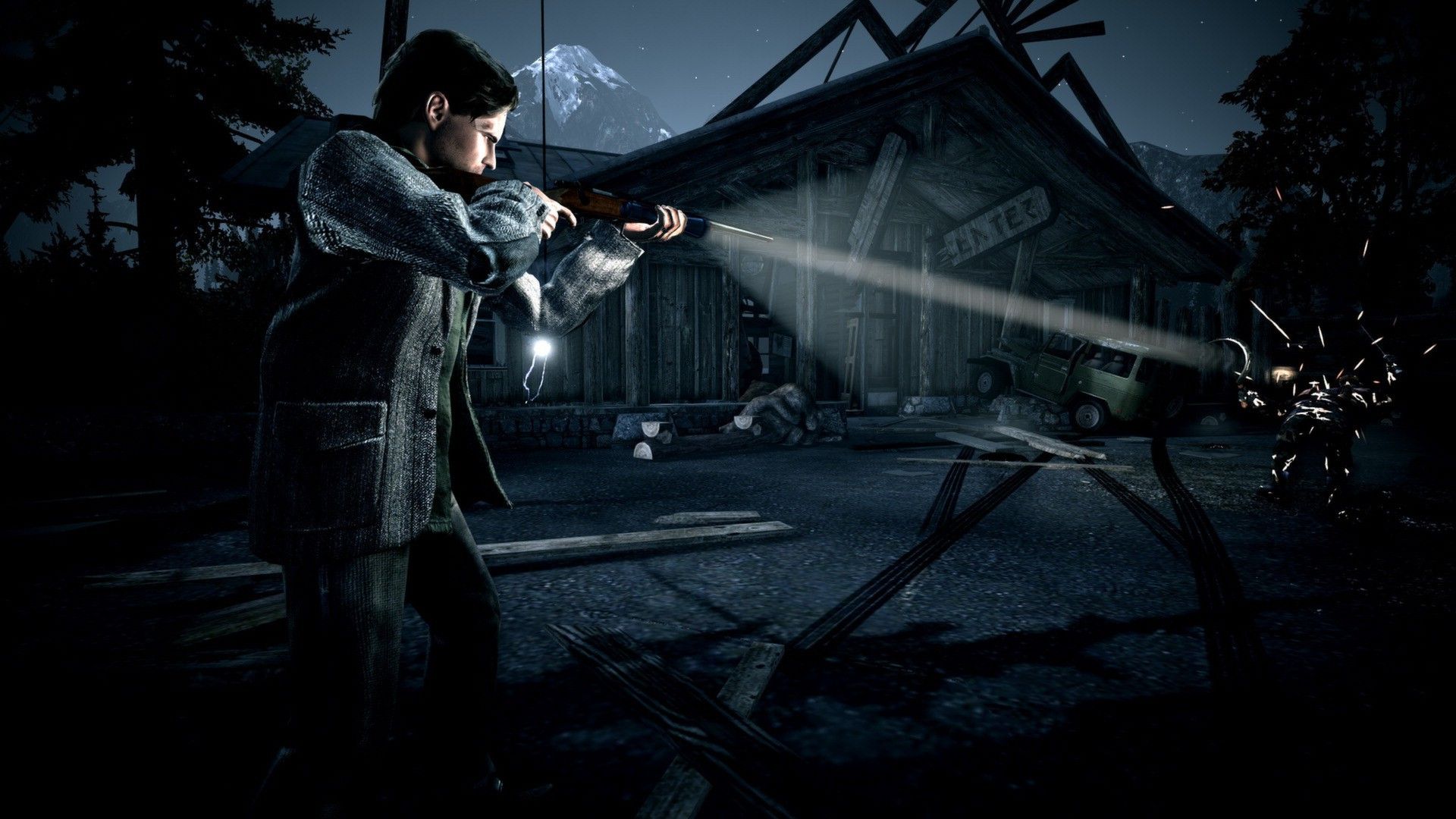
Alan Wake (2010)
CJ Wilson
A Pacific Northwest town called Bright Falls faces the wrath of a mysterious dark entity, known only as the Dark Presence, that is creating shifting, shadowy beings called the Taken. These are the enemies present in the psychological horror experience of Alan Wake. Much of the horror is focused on the titular main character, an author suffering from writer’s block, a man trying to reunite with his wife, Alice, before the mysterious entity attempts to envelop him and shroud the world in darkness.
Much of the action is handled in the third-person perspective. As Alan Wake, you will use a diverse arsenal of weapons, such as revolvers, shotguns, and hunting rifles, along with various light sources like flares and different types of flashlights, to keep the Taken at bay. You can also precisely time your dodge with the push of a button to initiate a cinematic moment to avoid an enemy’s attack and keep your bearings in check. Moreover, a lot of the combat encounters are up close and personal, which never fails to get your blood pumping, hoping you don’t get ambushed by a stray Taken at any moment. While you might get worried over how much ammo you have spent, you will usually come across plenty in certain safe areas like nearby generators and light posts. In fact, you will even find supply caches containing flare gun ammo if you venture off the beaten path.
What Alan Wake does exceptionally well is to make you terrified of your surroundings as you become desperate and scared of what may be coming for you at any moment. The story plays on concepts of plot structure, allusions, and dialogue, which also includes references to famous authors like Stephen King and Dan Brown. There are even a few situations play out similarly to films like The Shining and Deliverance.
You'll find collectibles as you progress, like manuscript pages that allude to future events and reveal the backstories of certain side characters, fleshing out the intriguing world created by Remedy Entertainment. You will occasionally come across radios that provide some background information on what has happened in the story so far, while television sets give you episodes to watch from a show inspired by the Twilight Zone called Night Springs.
But there are some collectibles that give you a fun incentive to look out for, like coffee thermoses and tin can pyramids for you to knock down with solid shooting. The DLC episodes also include cardboard standees and video game cartridges for your completionist habits.
While other horror games fixate on static instances of horror, like jump-scares, Alan Wake provides a psychological horror experience that is unlike anything else. The story and atmosphere envelop you as you become attached to the main character and root for him to be reunited with his wife. The action is frenetic and intense as you navigate the dark, gloomy forest grounds and the downtown streets as you try to fight back against the Taken.
If you're looking for a mind-bending, chilling horror experience to play this October, look no further than Alan Wake. Getting through its full story will give you around 11 hours of feeling terrified and captivated at the same time.
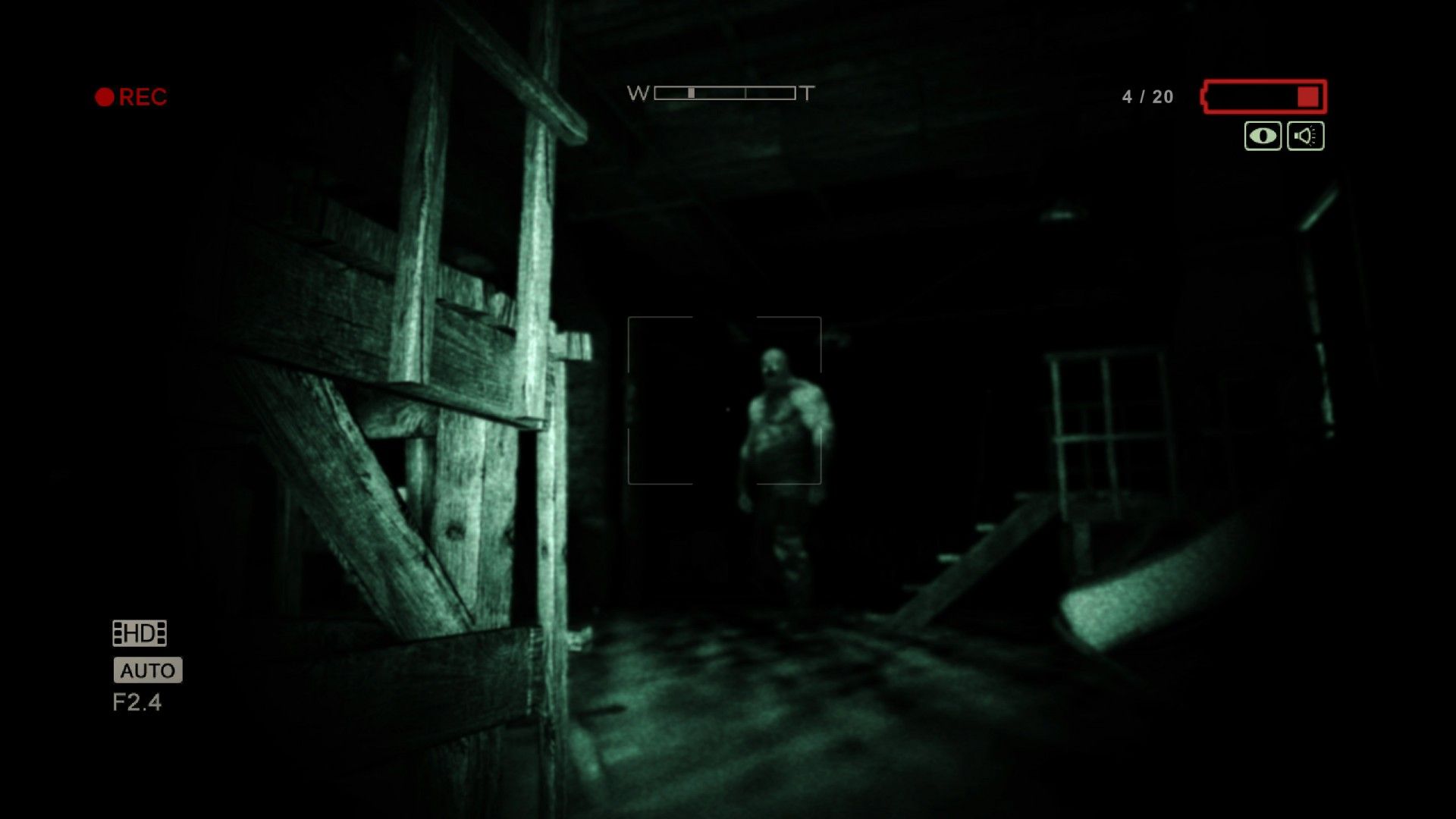
Outlast (2013)
Taylor D. Levesque
Welcome to Mount Massive Asylum. You are a freelance investigative journalist named Miles Upshur, and you are now tasked with escaping this labyrinthine construction with your life.
There is something about a good horror game and how it sticks with you, gets your heart pounding, and has you afraid to open doors or peek around corners. The way a game can bring out a heightened sense of awareness and focus because of the pressing fear and tension only makes it that much more immersive. In this regard, Outlast is a horror game that does everything right.
An ode to the macabre, Outlast is graphic, disturbing, morbid, and dark. No detail is spared in the gruesome scenes set before you. The game's first-person perspective is crafted in a way that puts you right into the protagonist's shoes, from the way the camera shakes when you run to the ability to look away from the gruesome happenings – unless something is grabbing your face and forcing you to look, at least. You see the asylum through Miles' eyes, and it all becomes that much more real and visceral. The blood on the walls, the entrails on the floors, or the psychopaths bursting through doors in a murderous rage all feel like more than digital creations.
You have also been stripped of your ability to fight; your only hope for survival is to run and hide. Through pitch-black corridors, your only source of light is the night vision mode on an old, crappy camera that quickly becomes a life-saving device… so don't let that battery die out. Oh, and by the way, hiding doesn't always mean safety. The disfigured monstrosities bent on homicide can and will seek you out.
Nor can the silence be trusted; it almost always means something's coming. When that something does show up, it's loud and cacophonous. Explosions, screams, shattering glass, or the deafening crescendo of nerve-shattering music surround you as you give up on hiding and run for your life, bound over furniture, and slam doors as you try to find something - anything - that might provide a hiding spot or an escape.
There are also documents to be found around Mount Massive. Whether in the form of patient files, surgical procedures, or journal entries, they slowly unveil the deep and twisted story behind the asylum. Sometimes it will hint at things to come, other times it will shed some light on something you've already seen, and the rest, well, they're just expanding on an already disturbing story.
It was a difficult decision to come up with just one horror title to recommend, but for Halloween? Outlast was one of the first games to pop into my head. I juggled a few games in my brain but this one took the cake. It's a short experience, clocking in at about five to seven hours to complete, but it's worth the nightmares.
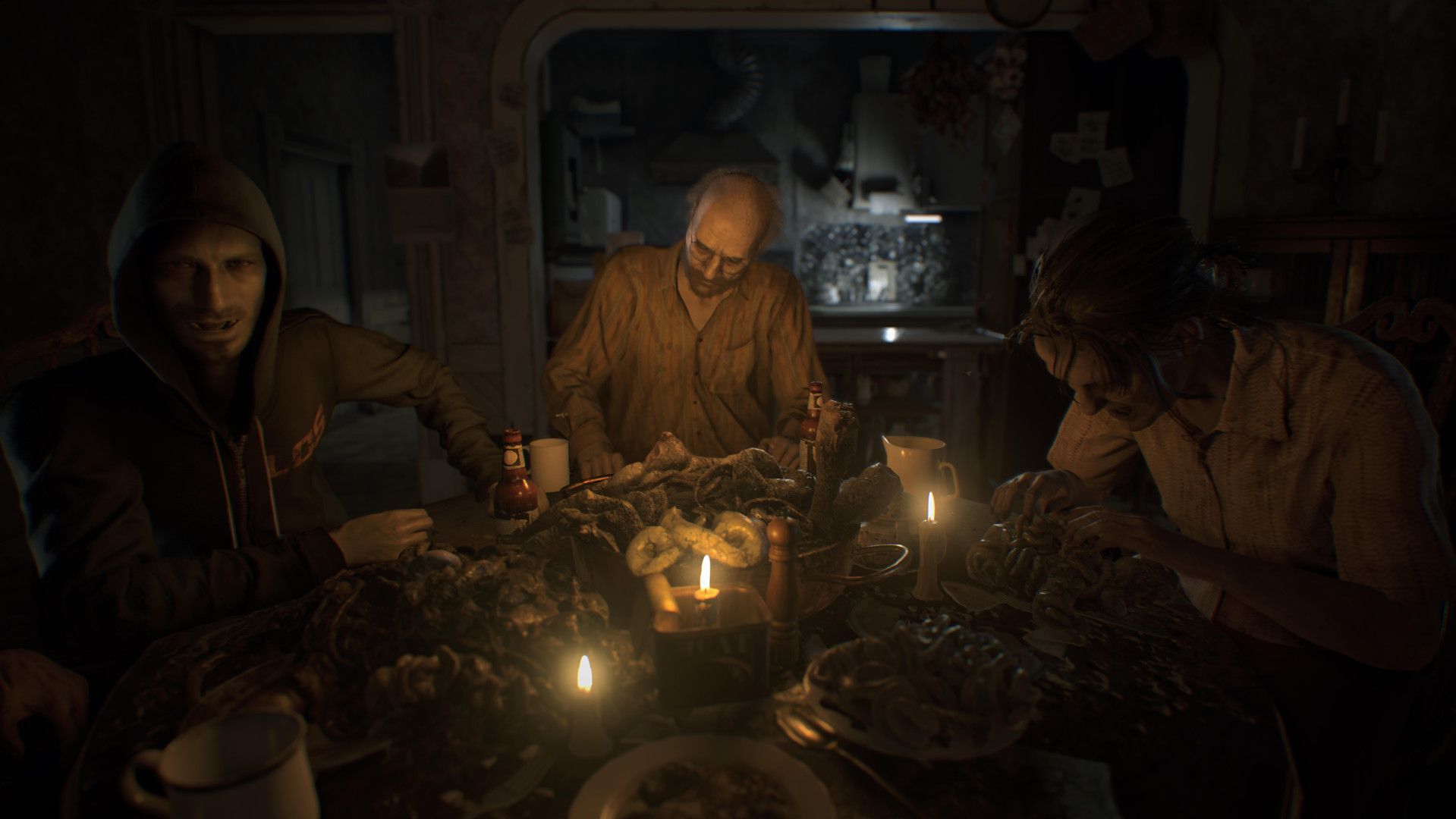
Resident Evil 7 (2017)
Tristan Jung
A missing wife and an abandoned house; a claustrophobic survival horror experience. Gone are the expansive set pieces and run-and-gun gameplay that filled the series in Resident Evil 5 and 6. Returning to the form of historical entries, Resident Evil 7 focuses its experience around the Baker estate as you, Ethan Winters, explore the halls and secrets of the house in search of your missing wife. Horror and dread are instilled through fundamental gameplay changes that are an ode to the original Resident Evil that started it all.
The most significant shift is the change in camera perspective from third-person to first-person. The over-the-shoulder view often provided an almost 360-degree view of your character, which meant that players would be able to detect enemies behind them. The pulled-out view also allowed players to peek around corners when they ‘hugged’ walls. This often led to the gameplay being more action-oriented with a heavy emphasis on shooting.
A first-person view changes the field of view afforded to players, becoming much narrow than in previous games, thus allowing developers to create a sense of dread and horror. As the player is not able to look around corners, the Baker estate with its twisting halls and sharp corners is able to obscure what lies ahead to surprise the players only when they are knee-deep. This is similar to what the original three entries did with the fixed camera perspective, as it’s not always clear what you’re about to walk into.
The concept of scarcity makes a return for both the players and the zombies. Although fewer zombies are on the hunt compared to the past action-oriented entries, there are also much fewer ammo resources at your disposal to mow down the enemies. This means that players are often faced with the decision of fight or flight and how they should use their resources as they explore the Baker estate.
Aside from the scarcity, the controls have also been modified to deter players from shooting their way through the house. With aiming down sights a slow process, accuracy deteriorating, and being a challenge to focus, it’s often the last resort to shoot your enemies rather than running past them and hoping they lose interest.
Finally, there is a heavy emphasis on exploration and puzzle-solving. Gone are the waypoint markers and linear paths indicating where to go next; players are expected to note and understand the items at their disposal to unlock different parts of the estate. Remembering where enemies spawn and carefully managing your resources is the main gameplay loop of Resident Evil 7.
All these factors come together to create a short but intense horror experience that has been used as a baseline for the genre to refine since its release in 2017.

Grimm’s Hollow (2019)
Priya Sridhar
Grimm’s Hollow is a free-to-play game, a standard RPG that knows how to lean on its visuals, story, and music. I reviewed it a few years ago when SUPERJUMP was still on Medium, and it inspired a dessert that came out really well. I was delighted to find out the developer was a fellow South Asian.
Lavender wakes up in a room where grim reapers surround her and offer her cake. She’s dead and has become a grim reaper herself. Though she at first assumes that this is some weird cult, Lavender realises that the skeletons are just masks, and their leader is an actual Grim Reaper, a nice guy named Grimm who likes drinking tea. He explains that dead children help him reap ghosts that lose their souls and become feral. You’ll venture into different caves to level up as you utilise skills to send ghosts to a better resting place.
Once Lavender gets her bearings and a scythe, she remembers that her little brother, Timmy, was with her when she died. She needs to find him in this strange world and restore his soul if he has become a ghost. The problem is that if Timmy still has his soul, other ghosts and interested parties will be after him too. Lavender may have to do more than reap to save Timmy.
Lavender’s relationships with other characters in the story are what make this game sparkle. She befriends the Baker, a reaper who claims to be more of a pacifist than a reaper. Grimm himself is not as scary as he first appears, being a reasonable leader who must make hard decisions for the greater good. Timmy is a sweetie, and most that meet him want to protect him.
Mechanically, the RPG format remains the same. I kept expecting it to be like Undertale, where the game lambasts you for level-grinding and that your decisions would affect the ending. Instead, the opposite happens: you must level-grind to get the best possible ending. That means also helping Lavender grow in more ways than one.
While short, the story is so much fun. I was crying and screaming when I got the worst ending. Then, I worked hard to get the best possible ending to have that moment of closure. Given the quality, Grimm’s Hollow should have a price tag on it, so I bought the soundtrack on Bandcamp to compensate the dev team for their excellent work.
I totally recommend people play this game in October and show love for the creator. The experience is well worth three hours of your time, and lots of feels.
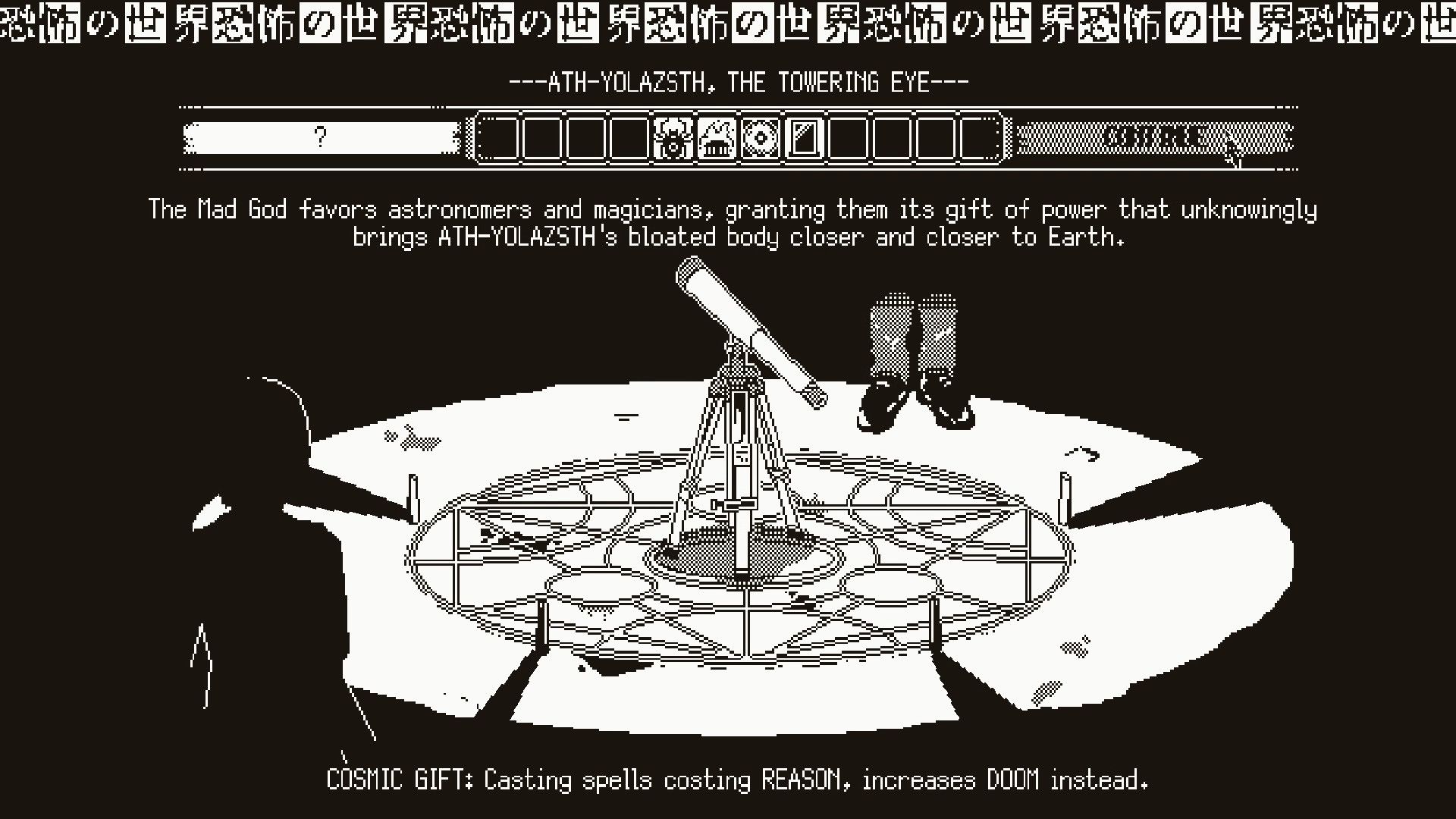
World of Horror (2019)
Josh Bycer
The indie space is known for a variety of horror games, and I could fill this entire submission with the variety of horror I’ve played. For my submission, I want to talk about World of Horror and how it delivers on a unique premise based on one of the most celebrated styles of Japanese horror.
The game is played through an aesthetic of a 1-bit computer in the 80’s, inspired heavily by the works of the famed manga horror writer and artist Junji Ito. The game leans into the tension and disturbing scenes that have made Ito famous. If you’re squeamish when it comes to brutal imagery, this is not the game for you.
As for the gameplay, this is a horror rogue-like. Your mission is to solve randomly chosen cases without dying or being driven insane by the incoming elder God who threatens everyone. Each case requires you to explore certain areas and try to complete bonus objectives to change the plot of the story. While exploring you can find friends, weapons, or suffer from a variety of events.
Combat is, at the moment, the weakest part of World of Horror. You’ll assign actions to a timeline and try to deal damage before the enemy reduces your health, sanity, or both, to zero. Once you get one good weapon and high enough speed, you can plow through just about any encounter in the game. There have been discussions about reworking combat and using magic, but that is not in the game as of this time.
World of Horror is a brilliant example of both implementing rogue-like design into horror, and how you can make something terrifying without needing high-fidelity graphics. The game has been in development for a few years now, with the designer having to take a break last year due to personal reasons. There is now modding support and people have been working on their own custom cases for the game. I do hope that there is a light at the end of this Lovecraftian tunnel for the game to be finished, as it is an amazing foundation for present and future horror.
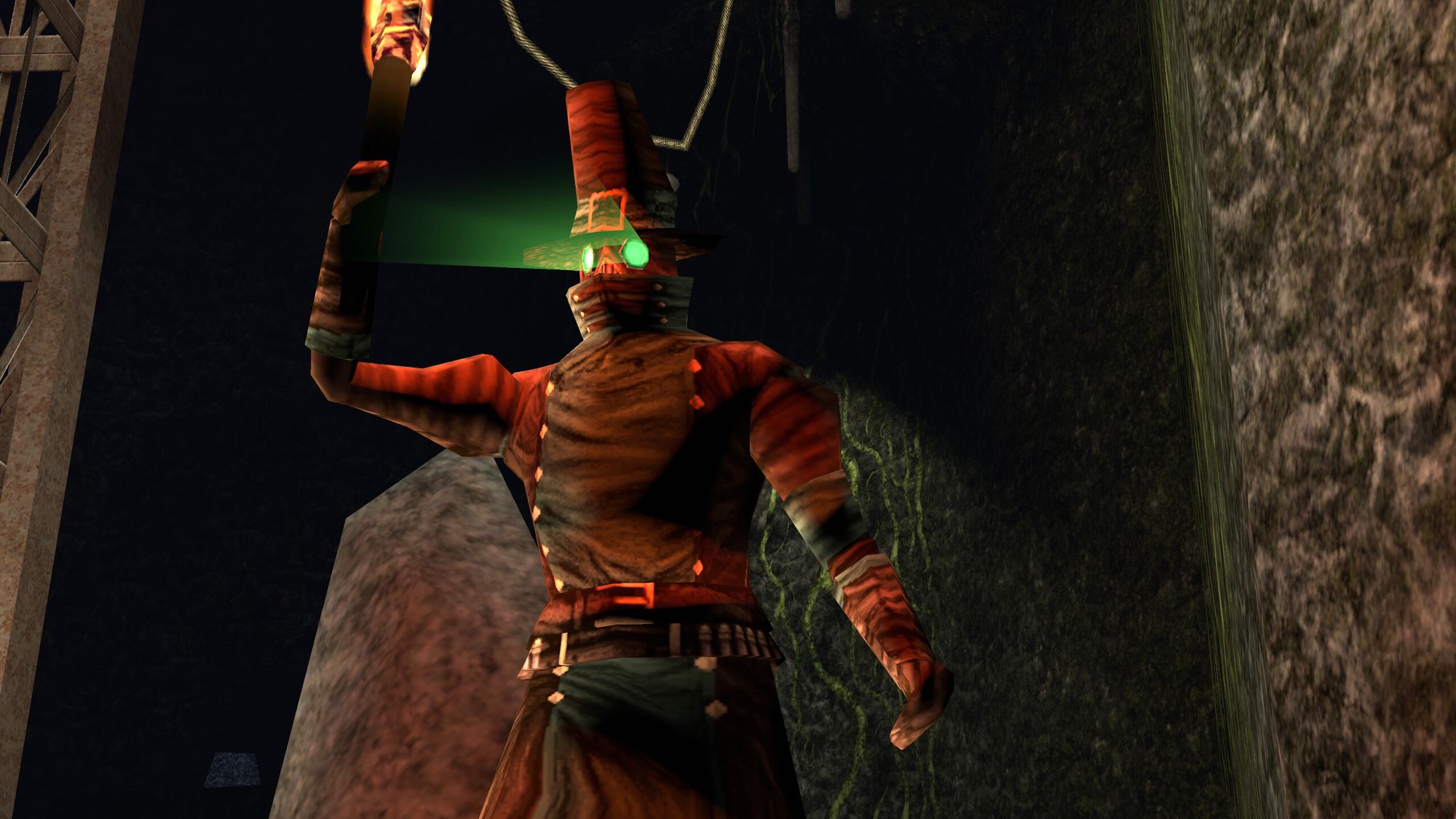
Gloomwood (2022)
Anthony Wright
The haunted cobblestone streets of Thief’s steampunk metropolis taught me that you did not need loud noises or horrific images to scare your audience. It instead managed to slowly crawl under your skin with its sound and atmosphere, creating a world so filthy and disgusting that it would often make you feel intimidated by the darkness you were tasked to stay within.
Gloomwood is a title that is so massively inspired by the classic Thief series that you would be forgiven for mistaking it as a sequel, but calling it such would only undersell the incredible potential therein. Gloomwood feels more like a love letter to both the stealth and survival horror genres, combining the best of both worlds to create a promising start in what is currently only a short demo.
As it is an early-access title, it only has 3 stages for players to sneak their way through. Whilst the experience does end quite abruptly, the variety and detail shown between each level have me incredibly excited for what the finished product might look like. Each level feels like its own horror showcase, having players navigate through rotten fisheries, rocky cliffsides, and pitch-black caves.
Gloomwood is much more visceral when it comes to horror than Thief, creating a much more frightening environment with a variety of scarier foes to contend with. The raspy and disfigured voices of the Huntsmen are what players first come up against. They are a perfect introduction to how stealth works in the game, with their field of vision appearing like floodlights piercing out of their eyes, changing colour depending on their mood. Whilst Gloomwood doesn’t go completely guns blazing on the horror in the demo, it does tease many more frights to come, such as the hideous “Crowmen'' that you can only catch a glimpse of splashing around in the sewers of its main city.
Stealth is a huge part of Gloomwood, allowing players to utilise the darkness surrounding them, leaving plenty of choice and experimentation for how they navigate their environment. The opening of the game leaves players with nothing but a blade at their disposal, and it requires patience and timing to master. It’s a great way to introduce players to the world of Gloomwood, forcing them to watch their enemies and study their patterns prior to going in for the kill.
Gloomwood is jokingly referred to by the developers in their marketing as “Thief with guns”, and whilst it isn’t exactly accurate towards the overall experience, the game does indeed offer a variety of guns for the player to use. Ammo is extremely scarce in its higher difficulty options (which, in my opinion, is how it should be played), so much so that you’ll often find the guns to be the last resort when everything goes to hell. So far, the arsenal includes a revolver and shotgun, but Gloomwood does tease potential for more creative options in store, such as the hidden “Undertaker” pistol that has the ability to shatter lights and set enemies on fire.
Gloomwood is shaping up to be one hell of a love letter towards what many would consider a bygone era of gaming, mixing its many influences to create an experience that feels refreshing to play through. It's a short but sweet experience that shows enough promise to justify its current length, and it feels perfect for the Halloween season.
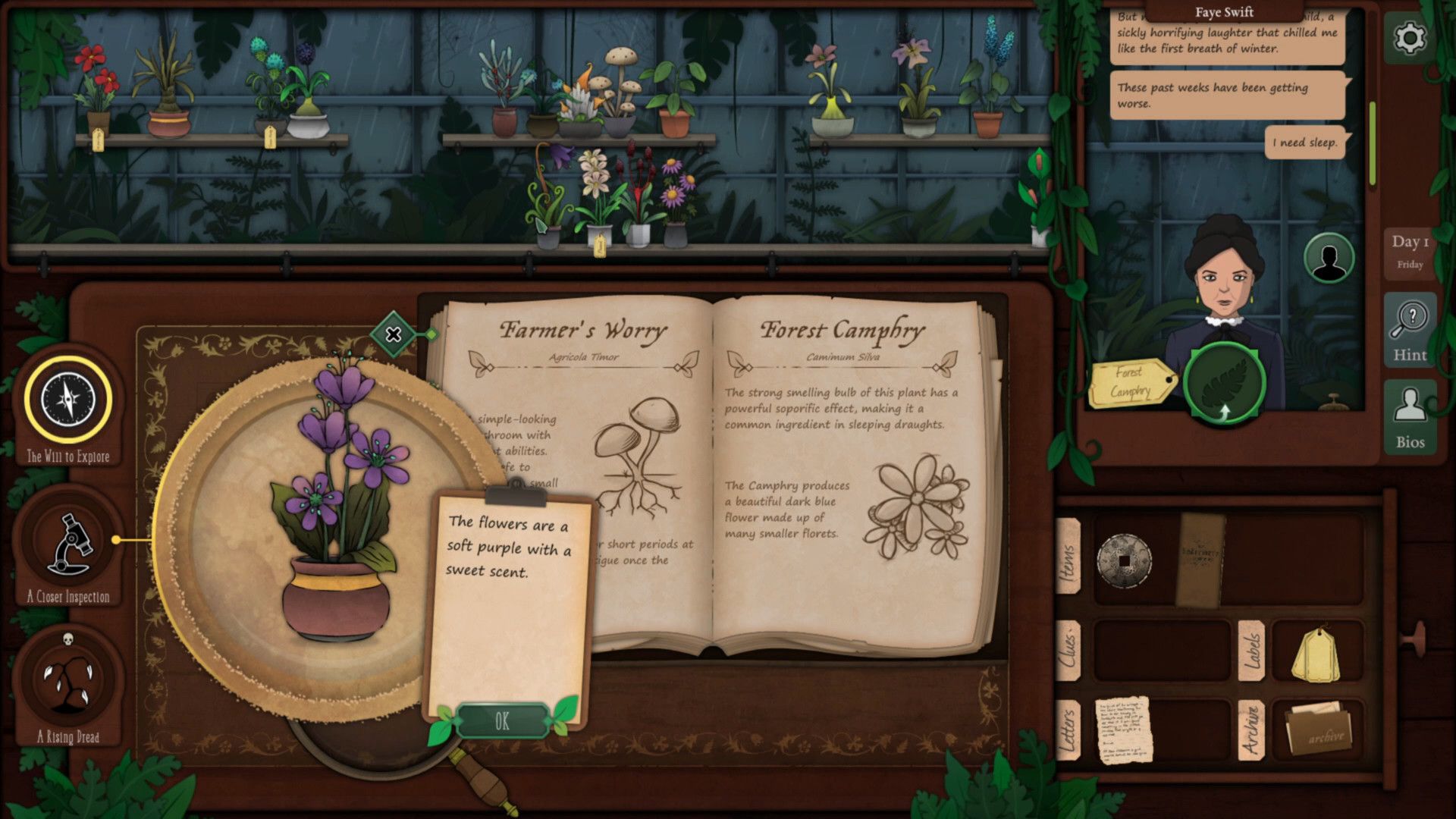
Strange Horticulture (2022)
YM Seah
The leader of a forest coven has been murdered. Soon after, townsfolk sight a mysterious masked woman accompanied by a monstrous beast. Several more unexplained deaths follow, plunging the town of Undermere into fear and uncertainty. As proprietor of the local plant store, you are privy to the news and happenings around town as your customers visit you, seeking remedies for a host of problems.
Occult practices and the follies of human nature supply the gloominess in Strange Horticulture, a single-player puzzle-solving game. Victorian-era Undermere is not a friendly town. Dark magic and cults are a part of life. You watch the rain beat down constantly, and your store stands alone in the shadows of a forest.
Within the comfort of your greenhouse and accompanied by your black cat Hellebore, you track down strange new plants and learn to concoct powerful elixirs to help solve the grisly murders. You are at your desk for the entirety of your horticultural journey, surveying a beautifully drawn map of the world to decipher cryptic cards, notes, and letters. You can almost smell old paper as you examine the clues, sketches, and descriptions in the aged plant guide. The brightly coloured plants that line your shelves wave at you while you work, and Hellebore sits contentedly at your customer window waiting to be petted.
While not a horror game, Strange Horticulture is nevertheless a great Halloween selection for those who prefer a delicious shiver down their spines over outright terror. There is darkness in this world that is preparing to pounce as you inspect plants and pore over your guide for answers. Dread rises if you prescribe the wrong remedies, threatening to break your confidence and divert you to more puzzles before you can get back to the main game.
No one looks for heroes on the side-lines. Even in Strange Horticulture, you are not at the forefront of investigations into the mysterious murders or visitors, and yet, nothing would be accomplished without your careful observations and assistance. This perspective is relatively rare, and it has been such a joy to play a game that lets me save the world while doing what I do better than being heroic. Strange Horticulture is for the Radagasts and Neville Longbottoms who are side-characters, but without whom the evil that threatens real and imagined worlds would be that much harder to defeat.
Several branching choices with consequences for both the narrative's ultimate conclusion and the path to that end, contribute greatly to replayability. I made completely different choices between my first and second playthroughs and came to the same ending, but on a third playthrough, a different combination of choices led to a dire conclusion. Considering that this is a relatively short game that I could complete in six to nine hours, there is all of October and beyond to explore alternate choices and potential endings in this delightfully spooky detective game.
Those were the spookiest delights from the SUPERJUMP Team, but what are you playing this Halloween?








